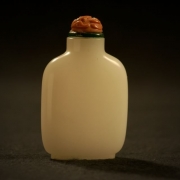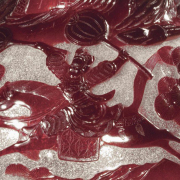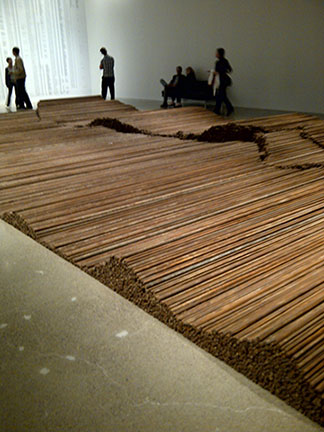Kashmiri Shawls: Fashionably Wrapped
Fashionably Wrapped: The Influence of Kashmir Shawls
Until July 4, 2010 at the Textile Museum of Canada, 55 Centre Avenue, Toronto
www.textilemuseum.ca
‘Connecting cloth, culture and art’ is the slogan of the Textile Museum of Canada, and it readily accomplishes this purpose with its current colourful exhibition Fashionably Wrapped: The Influence of Kashmir Shawls. The exhibition is curated by Central Asian and Caucasus textile expert Natalia Nekrassova whose previous well-received shows at the Textile Museum of Canada have covered topics on weaving traditions in Asia, the Silk Route, Pakistan and Afghanistan. Here she has selected thirty-three shawls from the museum’s permanent collection to demonstrate the transformation of the Kashmir shawl both in style and production technique after its arrival in Europe.
The shawl’s evolution from part of traditional costume worn by Kashmiri men for several centuries to an everyday accessory in Victorian England amongst women of all classes was a rapid one. As a significant international trade item, the most distinctive aspect of the Kashmir shawl was its fine, soft under-wool derived from the Himalayan mountain goat. This wool, known as ‘cashmere’ in English, was indeed named after the well-established textile centre of the Kashmir Valley in India.
Interestingly, the Empress Josephine of France played a pivotal role in the meteoric rise of the Kashmir shawl as a highly desired fashion item when Napoleon gifted her several exorbitantly expensive shawls in 1801. She appreciated them for their lightness, warmth and exotic qualities, and since other affluent ladies in Europe viewed her as an arbiter of good taste, these luxurious shawls quickly became popular.
In imitation of the Indian style, the British produced the “Norwich shawl” in the early 1800s. Shawls which had originally been hand woven by Kashmiri craftsmen were copied by weavers in France, Great Britain and Russia using the recently invented Jacquard loom and mass-produced during the Industrial Revolution, thus dramatically reducing production time and cost for consumers.
With their distinctive floral motif, the shawls marketed in Europe were commonly referred to as ‘paisley’ shawls after the city of Paisley, Scotland which eventually dominated shawl production in the 19th century. The characteristic motif of the delicate Kashmiri boteh (flower), a slightly curved floral cluster with bent tip, morphed into the familiar teardrop-shaped design used in a repetitive pattern preferred by European tastes.
Highlights of this exhibition include a Kashmir goat-hair tilikar (a type of shawl made of a patchwork of twill tapestry pieces sewn together) from 1850-1860; as well as an elegant and very feminine Norwich shawl from 1810-1820 made of wool and silk, with a supplementary weft patterning on twill-woven ground featuring the typical paisley pattern. Visitors also have the opportunity to view finely embroidered examples of mid-19th century coats or choga, long-sleeved garments worn by Indian men.
Although the fashion trend of the paisley shawl waned in the late 19th century, the pashmina descendants of the treasured Kashmir shawls are enjoyed cross-culturally today. This exhibition vividly demonstrates their importance as examples of exceptionally beautiful and practical textile art.
Susan Lahey, MA, ISA
President, Eastern Art Consultants Inc.
Written as an exhibition review for the Asian Art Newspaper






Leave a Reply
Want to join the discussion?Feel free to contribute!